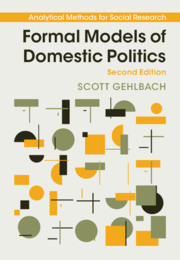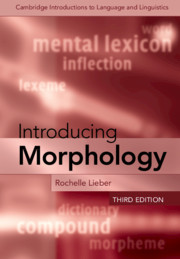Refine search
Actions for selected content:
36856 results in Cambridge Textbooks
Dedication
-
- Book:
- Introduction to Finite Elements in Engineering
- Published online:
- 08 November 2021
- Print publication:
- 21 October 2021, pp v-vi
-
- Chapter
- Export citation
19 - The 1980 Certain Conventional Weapons Convention
-
- Book:
- The Law of Armed Conflict
- Published online:
- 08 October 2021
- Print publication:
- 21 October 2021, pp 585-610
-
- Chapter
- Export citation
4 - The Discrete Fourier Transform
-
- Book:
- Essentials of Geophysical Data Processing
- Published online:
- 02 November 2021
- Print publication:
- 21 October 2021, pp 37-49
-
- Chapter
- Export citation
4 - One-Dimensional Heat Conduction
-
- Book:
- Introduction to Finite Elements in Engineering
- Published online:
- 08 November 2021
- Print publication:
- 21 October 2021, pp 118-151
-
- Chapter
- Export citation
10 - Command Responsibility
-
- Book:
- The Law of Armed Conflict
- Published online:
- 08 October 2021
- Print publication:
- 21 October 2021, pp 317-349
-
- Chapter
- Export citation
Table of Cases
-
- Book:
- The Law of Armed Conflict
- Published online:
- 08 October 2021
- Print publication:
- 21 October 2021, pp xxiii-xxix
-
- Chapter
- Export citation
9 - Obedience to Orders, the First Defense
-
- Book:
- The Law of Armed Conflict
- Published online:
- 08 October 2021
- Print publication:
- 21 October 2021, pp 282-316
-
- Chapter
- Export citation
Appendix B - Fourier Transforms of Continuous Functions
-
- Book:
- Essentials of Geophysical Data Processing
- Published online:
- 02 November 2021
- Print publication:
- 21 October 2021, pp 155-168
-
- Chapter
- Export citation
Index
-
- Book:
- The Law of Armed Conflict
- Published online:
- 08 October 2021
- Print publication:
- 21 October 2021, pp 735-744
-
- Chapter
- Export citation
3 - Observables
- from Part I - Basics
-
- Book:
- Quantum Mechanics
- Published online:
- 19 November 2021
- Print publication:
- 21 October 2021, pp 38-66
-
- Chapter
- Export citation
3 - One-Dimensional Elasticity
-
- Book:
- Introduction to Finite Elements in Engineering
- Published online:
- 08 November 2021
- Print publication:
- 21 October 2021, pp 71-117
-
- Chapter
- Export citation
2 - Gaussian Elimination
-
- Book:
- Introduction to Finite Elements in Engineering
- Published online:
- 08 November 2021
- Print publication:
- 21 October 2021, pp 35-70
-
- Chapter
- Export citation
Appendices
-
- Book:
- Essentials of Geophysical Data Processing
- Published online:
- 02 November 2021
- Print publication:
- 21 October 2021, pp 152-188
-
- Chapter
- Export citation
2 - Codes, Conventions, Declarations, and Regulations
-
- Book:
- The Law of Armed Conflict
- Published online:
- 08 October 2021
- Print publication:
- 21 October 2021, pp 34-66
-
- Chapter
- Export citation
4 - Protocols and Politics
-
- Book:
- The Law of Armed Conflict
- Published online:
- 08 October 2021
- Print publication:
- 21 October 2021, pp 106-128
-
- Chapter
- Export citation
Table of International Treaties
-
- Book:
- The Law of Armed Conflict
- Published online:
- 08 October 2021
- Print publication:
- 21 October 2021, pp xxx-xxxiv
-
- Chapter
- Export citation
Appendix C - Random Variable Concepts and Applications
-
- Book:
- Essentials of Geophysical Data Processing
- Published online:
- 02 November 2021
- Print publication:
- 21 October 2021, pp 169-187
-
- Chapter
- Export citation
17 - Calculation Methods Beyond Perturbation Theory
- from Part II - Applications
-
- Book:
- Quantum Mechanics
- Published online:
- 19 November 2021
- Print publication:
- 21 October 2021, pp 307-339
-
- Chapter
- Export citation

Formal Models of Domestic Politics
-
- Published online:
- 20 October 2021
- Print publication:
- 30 September 2021
-
- Textbook
- Export citation

Introducing Morphology
-
- Published online:
- 18 October 2021
- Print publication:
- 26 August 2021
-
- Textbook
- Export citation
